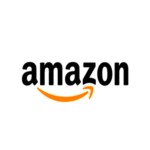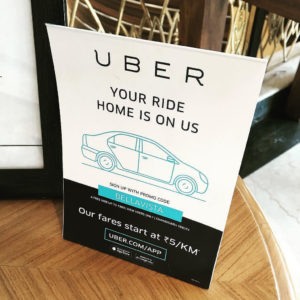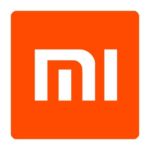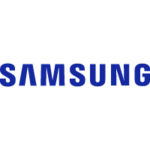Search results for: Marketing Communication Mix

Amazon marketing communication mix deals with individuals elements of the marketing mix such as print and media advertising, sales promotions, events and experiences, public relations and direct marketing. Amazon Print and Media Advertising Amazon uses print and media advertising extensively in order to communicate its marketing message to the members of the target customer segment. The most memorable Amazon TV ads include a video clip featuring former Top Gear host Jeremy Clarkson promoting Amazon Fire TV, a promotion deal reported to cost Amazon GBP 160 million[1]. Moreover, TV commercials promoting Amazon feature cute animals in order to associate the brand image with qualitative values. This strategy indicates to changes in Amazon marketing message in a way that “rather than hawking hardware like Kindle e-readers, furry pets are pitching Amazon’s USD 99,00 Prime membership, which features delivery discounts and media streaming”[2]. The online retail giant had also released “Mom’s Here” TV advertisement on Oprah Winfrey Network, targeting mothers for Amazon Echo. In 2019 Amazon overtook Netflix as the top advertiser for video streaming services and increased TV advertisement spending by 28% for Amazon Prime Video.[3] Print advertising is used by Amazon extensively as well via magazines, journals, newspapers and billboards. In the latest move, Amazon started to print advertisement messages, pictures and cartoon characters from “Minions” movie on its shipping boxes[4], marking the start of a new type of print advertising. One of the most memorable print advertisements by Amazon refers to the ad that appeals to Aatmanirbhar Bharat (self-sufficient India) sentiment featured in The Economic Times in 2020. This specific campaign has been praised as a successful attempt to show solidarity with nationalistic sentiment in India. Viral marketing also plays an important role in Amazon marketing strategy. Amazon is one of the earliest adopters of viral marketing and the…

Square marketing communication mix comprises communication channels to communicate the marketing message to the target customer segment. These channels are print and media advertising, sales promotions, events and experiences, public relations and direct marketing. Square Print and Media Advertising Despite being an internet-based financial services platform, Square uses traditional forms of advertising such as TV and radio ads occasionally. The financial services and mobile payments company also uses billboards and posters to communicate its marketing message to the target customer segment. Social media is the main platform that is extensively used by Square as an effective communication channel with perspective customers. Specifically, the financial services platform uses content marketing to inform about the cases of small businesses that were able to increase their sales using Square card readers and other products and services. These success stories are meant to inspire other small businesses worldwide to try using Square products and services. Square Sales Promotions Square uses the following sales promotion techniques. 1. Square Affiliate Program. The program offers various bonuses for the use of different types of products and services by referrals. For example, the payments the company offers USD5 per new sign-up, plus a USD15 bonus when an activation starts taking payments within 45 days of signup. Moreover, there is USD5 per new sign-up, plus a USD233 bonus when an activation processes their first transaction using Square for Retail within 45 days of signup.[1] 2. Point of sale materials. Square produces and sells a wide range of point of sale products such as card readers, stands, terminals, register and wide range of related accessories. The hardware and point of sales materials are designed in simple and eye-catching attractive manners. As of September 2021, Square does not use seasonal sales promotions, money off coupons, competitions, discount vouchers,…

Uber marketing communication mix comprises print and media advertising, sales promotions, events and experiences, public relations and direct marketing. Uber marketing communication mix is aimed to associate using Uber services with cost-efficiency, effectiveness and convenience. Uber Print and Media Advertising Uber uses traditional print and media advertising sparingly, mainly concentrating on social media and word-of-mouth marketing channels. Nevertheless, the global taxi technology company still uses TV ads, newspapers and magazine ads, posters and banners in selected locations. The ride-hailing giant is known for unconventional advertising techniques. These include putting ads on drones and having them taunt drivers stuck in traffic in Mexico City.[1] Marketing campaign “Boxes” as metaphor for excessive traffic jams in Asian cities, where the ad proposes ridesharing as a key part of the solution has been praised as innovative and appealing.[2] At the same time, Uber’s use of advertising has proved to be controversial in several instances. For example, a billboard in Egypt which says “I escaped from driving my mother-in-law home 64 times” was found to be offensive by local people[3]. In France, campaign offering men free rides with ‘incredibly hot chicks’ has been criticized as sexist, resulting in an apology from Uber France.[4] Recently, the largest mobility platform in the world started advertising Uber Eats services through selected radio channels in selected locations promoting earning potential through the service. Uber also uses celebrity endorsement in print and media advertising in an occasional manner. For instance, in 2018 the company signed an endorsement deal with Virat Kohli, captain of India’s cricket team to serve as Uber brand ambassador in India.[5] Uber Sales Promotions Uber uses various sales promotions techniques in an integrated manner. For the largest mobility platform in the world discounts, loyalty programs, promotions, refunds, and credits provided to end-users who are not customers totalled USD…

Tesla marketing communication mix explains the usage of individual elements of the marketing communication by the alternative fuel vehicles manufacturer. These elements include print and media advertising, sales promotions, events and experiences, public relations and direct marketing. Tesla Print and Media Advertising Tesla uses print and media advertising sparingly as a part of its unconventional marketing strategy. The alternative fuel vehicles manufacturer does not spend money at all on traditional advertising platforms such as TV, radio, magazines, newspapers, billboards and posters. Instead, Tesla’s unconventional marketing strategy also involves the promotion of fan-made ads that come for no cost for the electric automaker. The company launched Project Loveday, a contest for fan-made videos advertising Tesla. Project Loveday was named for Bria Loveday, a fifth grader who suggested the idea for the contest to CEO Elon Musk.[1] Project Loveday ad contest winners such as Electric Life’s “Embrace the Energy” and Thy Future’s “A Better Future.” and ‘Spaceships. For Earth.’ have been watched in YouTube millions of times, contributing to the level of Tesla brand awareness in a cost effective manner. Tesla also manages to get celebrity endorsement free of charge. The list of celebrities who were enthusiastic about the company and therefore, promoted the brand and its products for free include TV host Stephen Colbert, actress Alyssa Milano, director Jon Favreau, and Teller, the silent partner in the magic duo Penn & Teller to name just a few. Tesla Sales Promotions Tesla uses the following sales promotions techniques in order to increase the sales and boost the level of its brand awareness: Referral Program. Tesla car owners who refer more customers to the company can qualify for a wide range of awards including Solar Roof, 21” Arachnid Wheels for Model S or 22” Turbine Wheels for Model X and VIP invitation for Tesla Unveiling events.[2] Tesla Referral Program is occasionally updated.…

W.W. Grainger marketing communication mix is a framework that explains the application of individual elements of communication by the global industrial supply company. Individual elements of the marketing communication mix consist of print and media advertising, sales promotions, events and experiences, public relations, direct marketing and personal selling. W.W. Grainger Print and Media Advertising W.W. Grainger and its portfolio brands such as Zoro, MonotaRO and Cromwell use print and media advertising in an occasional manner. Specifically, the global industrial supply company uses TV commercials such as “Keeping America Running” and “We’ve got Your Back”, as well as, radio commercials. Additionally, the B2B distributor uses magazines, newspapers, billboards and posters forms of print and media advertising. It is important to note that despite increasing popularity of social media, up to date extensive potentials of viral marketing remain unutilised by Grainger. Lack of usage of viral marketing can be specified as one of the main shortcomings of Grainger marketing strategy. W.W. Grainger Sales Promotions W.W. Grainger uses the following forms of sales promotions: Clearance Centre on company website. The global industrial supply company offers discounts of up to 70% for some items purchased online. Money off coupons. Grainger does not offer coupons directly, but there are dozens of third-party companies such as Groupon, RetailMeNot and SlickDeals that offer money-saving coupons that can be used with the B2B distributor. Point of sale materials. The industrial supply company uses posers and display stands in its 457 branches worldwide[1] to increase the visibility of popular products and product categories. Customer Loyalty Program. Global MRO products distributor has Red Pass Plus Program that offers customer a set of advantages such as free next day delivery and savings of up to 15% on thousands of products.[2] W.W. Grainger Report contains a full…

Airbnb marketing communication mix as a framework explains how the global lodging company uses individual elements of marketing communication mix. Elements of marketing communication mix according to this framework consist of print and media advertising, sales promotion, events and experiences, public relations, direct marketing and personal selling. The patterns of use of these elements by Airbnb is explained below. Airbnb Print and Media Advertising Despite the purely online nature of its business model, Airbnb uses print and media advertising extensively. The accommodation and experience marketplace launched Airbnb Magazine in May 2017 distributed in the U.S., with the exception of a small number of copies that will be available for sale in London priced at USD 3,99.[1] Airbnb magazine is a highly dynamic print media platform that responds to the interests of the company’s target customer segment. It has been noted that if Airbnb “algorithms see that users are increasingly searching for ‘Paris’, it notifies the magazine’s editorial staff to whip up a story or two on the French capital.”[2] It has also been speculated that the global hospitality service brokerage company has plans to create its own TV shows in order to encourage people to travel more. As a starting point “Airbnb has reportedly worked on a TV show called Home for Apple’s new TV Plus subscription service; the show focuses on unearthing unique living spaces around the world and the people who reside there”[3] Although Airbnb did not use celebrity endorsements up to date, the global rental and experiences platform effectively uses the use of its services by celebrities as a part of its marketing strategy. For example, the lodging company promotes luxury mansions and villas where celebrities such as Arianna Grande, Lady Gaga, Britney Spears and Channing Tatum have stayed using Airbnb. Viral marketing is also used by Airbnb…

Microsoft marketing communication mix explains the patterns of use of elements of marketing communication such as advertising, sales promotion, events and experiences, public relations, direct marketing and personal selling by the multinational technology company. Microsoft Print and Media Advertising Print and media advertising is placed at the core of Microsoft marketing strategy. Microsoft print and media advertising expenses amounted to USD 1.6 billion, USD 1.5 billion, and USD 1.6 billion in fiscal years 2018, 2017, and 2016, respectively[1]. As illustrated in figure below, Microsoft’s print and media advertising campaigns make an appeal to needs, wishes and aspirations of target customer segment and positions Microsoft products and services as efficient tools to be used to satisfy them. Example of Microsoft print advertisement Some of Microsoft’s TV advertisements such as “the apps you want” 30-second commercial that promotes unified Windows Store within Windows Phone and Windows 8 have become viral videos in social networking sites mainly due to engaging presentation of information. Moreover, as an unprecedented move the company has placed a Wi-Fi-Enabled print advertising promotion in a special edition of Forbes magazine targeting a selected group of subscribers. Ultra-thin router and battery placed within pages of magazine granted the possibility of free internet browsing for about 3 hours. Moreover, the global technology company has been gradually shifting its focus from traditional media such to the social media and other online platforms. Microsoft Sales Promotions Sales promotion is used by Microsoft in a frequent manner in both store formats – physical and online. Microsoft sales promotions include the following: 1. Seasonal sales promotions. Microsoft offers 12 Days of Faves promotions, during Christmas and New Year holidays. Additional seasonal sales include Black Friday and Cyber Monday. 2. Discount codes. The company offers special education-designated Microsoft coupons for students, parents, faculty, and…

Xiaomi marketing communication mix explains the extent of usage of individual elements of marketing communication channels by the mobile internet company. Generally, elements of the marketing communication mix consist of print and media advertising, sales promotions, events and experiences, public relations, direct marketing and personal selling. Xiaomi Print and Media Advertising “Xiaomi once touted its avoidance of advertising as one of the keys to its early success—saving money on commercials helped keep the overall price of the phones lower. Instead, it relied on its upper executives and its “fans” to spread the word and attract new customers through social media.”[1] However, due to increasing competition from its local rivals Oppo and Vivo, The mobile internet company had no choice but to engage in certain forms of traditional advertising such as posters and newspaper advertising. Nevertheless, viral marketing remains as the most important form of marketing for Xiaomi. The internet technology company also uses celebrity endorsement from the likes of top Hong Kong actor-singer, Tony Leung, a 54-year-old best-known to English-speaking audiences for movies like “In the Mood for Love” and “Lust, Caution.”[2] Xiaomi Sales Promotions Xiaomi uses the following sales promotions techniques: Flash sales. Flash sales refer to sales of products and services online at a heavily discounted price for a short period of time. Xiaomi uses flash sales extensively, especially in India. Customer Loyalty Scheme. Reward Mi is a customer loyalty program that rewards loyal customers with exclusive benefits such as priority passes a.k.a F-codes and discount coupons which can be redeemed on selected products across Mi Store.[3] Seasonal sales promotions. The electronics and software company announces sales promotions on notable occasions as Christmas day and anniversaries of notable days for the company. Point of sale materials. The company uses point of sale materials such as posters and…

Samsung marketing communication mix utilises a number of marketing communication channels such as print and media advertising, sales promotion, events and experiences and public relations. Samsung Electronics uses these channels in an integrated manner as discussed below in more details. Advertising Print and media advertising is one of the core elements of the marketing mix extensively utilized by Samsung Electronics. One of the important key features of Samsung advertising strategy is that the multinational electronics company usually advertises its specific products such as Galaxy S and Note smartphones, but it does not advertise much Samsung brand in general . The most noteworthy media advertising campaigns include live commercials for Samsung Galaxy S 3 device on popular Jimmy Kimmel Live show in June 2012 and on Late Night With Jimmy Fallon on July and August of the same year. Moreover, partnership with Fox channel in the US to run four 30-second advertising clips during the National Football League, college football and World Series games in 2012 have been praised as efficient marketing campaigns.[1] Samsung print advertising in popular newspapers, magazines and journals have previously included direct attacks on its major competitors, notably Apple. For example, a print ad campaign titled ‘It doesn’t take a genius’ is a clever play of words on Apple’s emphasize on genius branding. The print ad compares major functionalities of iPhone5 and Galaxy S III and illustrating the superiority of Samsung’s product on several fronts.[2] Viral marketing is also extensively used by Samsung as one of the most effective advertising methods. For example, the latest 60-second viral marketing video titled “Anticipation” is a successful attempt to associate Samsung Galaxy S6 with excitement and a sense of achievement and recognition.[3] Sales Promotion Samsung uses sales promotions as a marketing tool more extensively compared to the majority of…

Google marketing communication mix explains the ways in which advertising, sales promotion, events and experiences, public relations and direct marketing tools are used by the company to communicate its marketing message to the target customer segment. Advertising Google emerged as a popular alternative for traditional print and media advertising and changed advertising industry worldwide to a great extent. As it is illustrated in figure below, by 2012 Google was generating more advertising revenues than print media in the US as a whole. The significance and market share of Google in the global advertising industry has increased even to a greater extent during the past five years, since 2012. Accordingly, owning a more significant advertising platform than print and media advertising, Google does not use traditional print and media advertising to communicate its marketing message to the target customer segment. Revenues by print media in the US and Google (worldwide)[1] Sales Promotion Sales promotion refers to the “stimulation of sales achieved through contests, demonstrations, discounts, exhibitions or trade shows, games, giveaways, point-of-sales displays and merchandising, special offers and similar activities”[2]. Google employs sales promotion marketing techniques rarely. The most noteworthy case relates to one day sales promotion of Google Glass via online purchase for USD1,500[3] and the promotion of Android 4.4 in cooperation with candy bar KitKat, owned by Nestle International Travel Retail. Up to date Google does not use popular sales promotions techniques such as seasonal sales promotions, money off coupons, competitions, discount vouchers, free gifts or loyalty cards… Alphabet Inc. (Google) Report contains a full analysis of Google marketing communication mix and Google marketing strategy in general. The report illustrates the application of the major analytical strategic frameworks in business studies such as SWOT, PESTEL, Porter’s Five Forces, Value Chain analysis and McKinsey 7S Model on Google. Moreover, the report…
